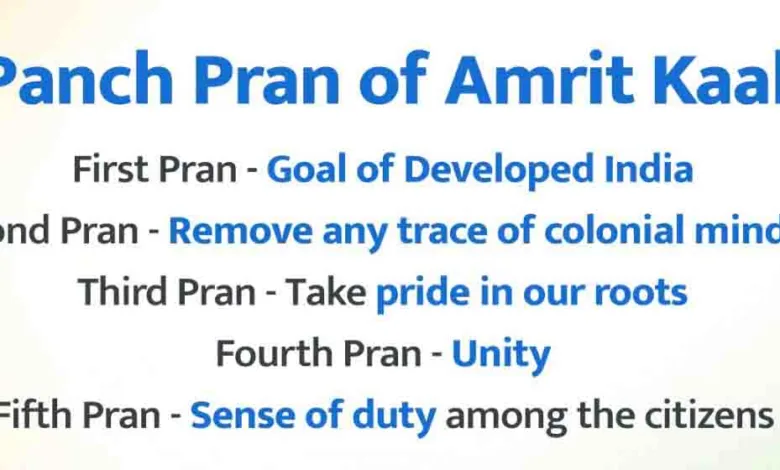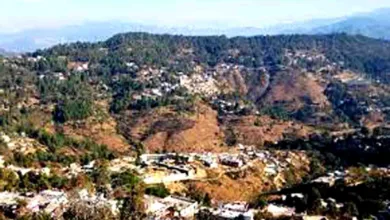Viksit Bharat@47: A Panch Pran way for developed India

GUEST COLUMN
 Trivendra Singh Rawat
Trivendra Singh Rawat
On completion of 75 years of independence, the country entered ‘Amrut Kaal’. On this occasion, the Prime Minister Narendra Modi urged fellow citizens to work towards “Panch Pran” which consists of five resolutions: aspiring and working for a developed India, shedding colonial mindset, taking pride in Indian heritage, striving to protect unity and integrity of the country and living as a responsible citizen, fulfilling duties with honesty.
While emphasising the significance of these resolutions, the PM exhorted all citizens, especially the youth, to understand and commit to contributing towards India’s growth by following the “Panch Pran” pledges. Since then, the “Panch Pran” concept has been highlighted in various speeches and initiatives by the PM, aiming to guide the country towards good governance and a resurgent India.
As part of its so-called Panch Pran programme, the Government of India has set targets to turn India into a developed country by the time the nation will be celebrating 100 years of Independence – 2047. One of the targets involves ensuring high-quality healthcare services for all. Bringing electricity to every household is another target. Plus, the government is determined to end open defecation, promoting sanitation and hygiene. Also, the government’s policy is to enhance mutual harmony involving people across the religious spectrum, negating designs aimed at ripping us apart in the name of fundamentalism and radicalism. The government is committed to enhancing the quality of education for all citizens and to go all-out in promoting women’s rights, gender equality and the dignity of women. It is also seeking sustainable development and environmental protection, including solar energy usage in homes and chemical-free agriculture.
Sharing his vision of ‘Developed India @2047’ with the vice- chancellors, teachers and students of all the universities of the country, the PM said ‘Yahi Samay Hai Sahi Samay Hai’ which is a meaningful and positive initiative to take the nation to new heights of development. His vision is mainly based on sustainable economic development. The Indian economy has been growing rapidly over the last decade and currently, it is the fifth largest economy in the world- all set to reach the fourth position.
According to S&P Global and Morgan Stanley, India is set to overtake Japan and Germany to become the world’s third largest economy by 2030. This is based on the projection that India’s annual nominal GDP growth will average 6.3 per cent through 2030. Some of the factors that could fuel India’s economic boom are offshoring, investment in manufacturing, the energy transition and the country’s advanced digital infrastructure. However, India also needs to increase its per capita income, improve its human development index and implement reforms in trade, finance, labour and infrastructure to achieve its potential.
The economic growth of a country mainly depends on the agriculture, industry and services sectors. The highest contribution to GDP is coming from the services sector and the lowest from the agriculture sector which is continuously decreasing. The main stake of the population in the society is agriculture and related activities which indicates the importance of the agriculture sector that needs massive reforms in terms of technology intervention and scientific approach to farming patterns.
The growth of the industry is stable and its contribution to GDP needs to be enhanced. Production Linked Incentives (PLI) is creating an ecosystem and promoting manufacturers to initiate production across 14 industry sectors.
Under the Gati Shakti Mission, infrastructure has been improving rapidly across sectors, including rail, road, air, shipment, telecommunication, internet connectivity and electricity, which, in the coming days, will facilitate attracting investment from overseas and private sectors. The incessant increase in FDI in the form of FII and FPI is the outcome of these dynamic initiatives which, in turn, aid to increase the contribution of industry to the GDP.
The services sector was very fragile during COVID-19 and it was completely affected due to the lockdown. The growth rate in both the industry and service sectors remained negative across the world because of the complete closure of the business and trade activities through the pandemic.
The agriculture sector has registered growth and this growth has given voice to the ‘Atma Nirbhar Bharat’ campaign which was translated into ‘Vocal for Local’, meaning that we need to promote local agricultural and horticultural products. This campaign will be of great help to augment the yield from the farm sector, especially for the small and marginal farmers in the days ahead.
India’s ascent to the third largest economy depends on various factors which include demographic dividend. India’s population is large and young. Large workforces can help productivity, innovation and economic growth. Also, economic reforms, if properly implemented, can be of great significance. Again, technological advancement and innovation are conducive to economic growth. Digitalization, research and development and technology-driven industries can revive the Indian economy. Better infrastructure can enhance productivity and attract both domestic and foreign investors. Further, global commerce and relationships with other nations can raise India’s economic profile. International cooperation offers new markets and opportunities for economic development. The nation has been progressing on these factors and climbing to new heights under the dynamic leadership of the Prime Minister.
There is a need for a robust policy towards quality education, adequate health care services and environmental protection towards which the government is making serious efforts and reforms to improve the quality of education, health and environment. National Education Policy (NEP)-2020 has been implemented in the entire country to improve education. NEP will be considered an important step in improving the quality of education and building India as an aggressive education hub in the next decade.
To provide good health services to its citizens, opening new government medical colleges is a big step, but it takes time to make a medical college functional. However, the provision under Pradhan Mantri Ayushman Yojana provides free health facilities up to Rs five lakh which can be considered as a revolutionary initiative to improve the health of the marginalised people in the country, ensuring a healthy society. These reformist steps will help create an educated and healthy working class which ultimately leads to an improvement in the HDI rank in the coming years. Again, this is the time of Industry 4.0. The policy for this generation is mainly based on the ‘Zero Defect Zero Effect’ to ensure environment protection and preserve the ecology along with the rapid pace of development to take India forward on the path of thriving and sustainable development.
Life on this planet of Earth is founded on five great elements: space, earth, air, water and fire. Hence the development policy of any country is to be based on the operation and use of these five elements. I strongly believe that coordination of these five elements with Panch Pran will help India morph into a developed one before 2047 as per the far-sighted vision of the Prime Minister.
(The author is the former chief minister of Uttarakhand. Views expressed are personal.)






